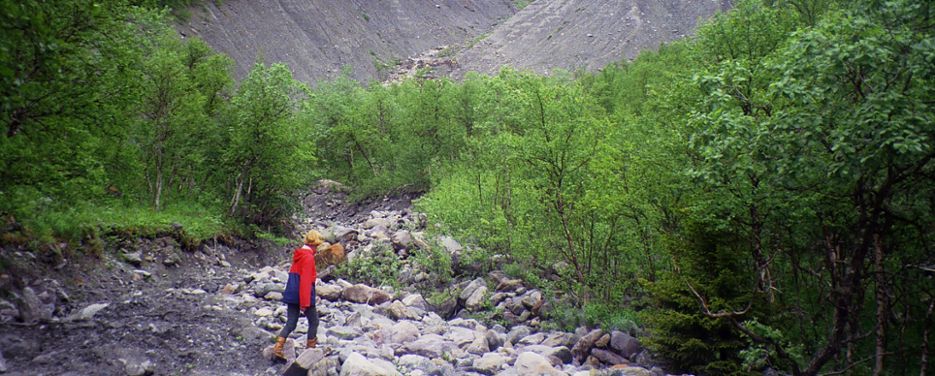A mudslide is a flowing mass of water and earth that moves down a gulley or an escarpment. Mudslides in connection with intense precipitation and are common in mountains, but also occur in other parts of the country.
Conditions for mudslides
The development of a mudslide requires a high water speed and material that can be mobilised such as soil material, sedimentary rock, trees or bushes along the watercourse. A high water speed can occur when water runs through a deep, narrow ravine with steep sides. The ravine prevents the water from spreading out, and thus helps to build and maintain a high water speed.
Considerable damage
As long as the slope is steep enough, the mudslide will continue moving downwards, and along the way the ground and surroundings will be affected by very powerful erosion.
Downstream buildings, infrastructure and other property may be affected by the large amounts of water and transported materials.
Increased problems in the future
A changed climate will lead to more intensive downpours and increased precipitation in parts of Sweden. Climate change thus means increased runoff and erosion, which in turn leads to an increased probability of moraine landslides and mudslides that are greater in scope.
